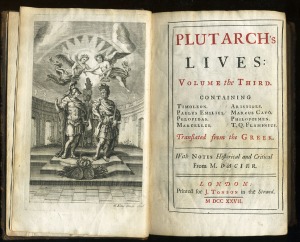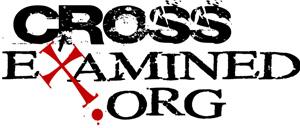You need to know this before you read the Bible
In my just concluded Barriers series, I addressed, tackled, took on and hopefully (at least for some) took down some of the primary obstacles to embracing the Christian worldview. But there’s one very influential barrier I have not yet taken aim at that should not go omitted. This obstacle is cited not only as one that keeps skeptics from believing or even considering Christianity, but also one that has engendered enough doubt in some believers to turn them into skeptics, like well-known former evangelical Christian now agnostic atheist and New Testament scholar Bart Ehrman, or former Christian minister now atheist and co-president of the Freedom From Religion Foundation Dan Barker.
This obstacle is so potentially formidable that I almost hesitate to mention it for fear of erecting a barrier for some that wasn’t there before. But I think what I’m about to share is powerful enough to demolish or at least substantially weaken this obstacle before it becomes a hindrance.
So here it is: the Gospel accounts appear to have real contradictions.
Some examples:
Both Matthew and Mark record Jesus cursing a fig tree for not having any fruit. A bit of an odd thing for him to do but it probably has spiritual significance. The tree subsequently withers, but in Matthew it “withered at once” while in Mark there’s no record of any immediate change. The disciples notice that it had withered the next morning as they passed it again.
Luke’s account in his Gospel of the post-resurrection events seems to indicate that all of Jesus’s appearances occurred within a day or two of his miraculous restoration to life, but in Acts, written also by Luke, he records that Jesus hung around for at least forty days.
An account of Jesus’s long-distance healing of a Roman centurion’s servant has the centurion himself coming to implore Jesus on behalf of his ailing servant in Matthew, but in Luke the centurion sends others to ask for this miracle.
In Matthew chapter 9 a ruler of the synagogue asks for a miracle from Jesus for his daughter who “has just died” but in Mark 5 he isn’t asking for a resurrection but a healing because she “is at the point of death.”
There are others, and internet inimical infidels (I yi yi) love to call attention to them as supposed evidence that the Bible can’t be trusted for anything that it records. But looking at evidence from other ancient documents clears up the confusion and cancels the contradictions.
Because we recognize the Gospels’ claim to be historical records of the life and ministry of Jesus and his disciples we expect them to read like a strictly factual, chronological textbook of history in first-century Palestine. But New Testament scholars say they are more in the genre of biography than history and comparing them to other ancient biographies is key to properly understanding their puzzling anomalies.
Ancient Greco-Roman biographies used compositional devices that we might see as disingenuous today in a work of non-fiction but were totally legitimate then. Like disregarding chronology to achieve a desired effect. Or…
compression – compacting a narrative to include only its necessary elements, thereby omitting details like time, day, and setting
transferral – attributing words or deeds to another, like recording that the centurion came to Jesus himself though he actually employed his servants to convey his request
displacement – transferring an event into a different context for literary effect
When these and other literary devices are recognized and understood, apparent contradictions become clear corroborations.
If you’re interested in looking into this very important bit of information yourself, I recommend this hour-long video lecture by New Testament scholar and historian Mike Licona. Or if you haven’t an hour to spare, peruse this transcript from William Lane Craig’s “Defenders” podcast.




Well written! The seeming contradictions in the Gospels do seem to hinder some from coming to faith. I think you are spot on when it comes to comparing the Gospels to ancient Greco-Roman biographies.
I remember in college we discussed how to reconcile the timing of the cleansing of the temple event in the Synoptics and in John.
In the Synoptics it appears toward the end of Jesus’ ministry while in John it appears at the beginning. Did Jesus cleanse the temple twice? Possibly. But a better explanation comes from the study of ancient biographies, where they did not always record events chronologically like we do in biographies today. So we concluded that Jesus cleansed the temple once at the end of his ministry and that John records it at the beginning for theological reasons. So there is really no contradiction at all!
I think your other points were very helpful too. You did a great job of making important points without being too wordy. Nice job!
LikeLike
Thank you so much for your comment, Carey. It’s an encouragement to me. 🙂
This basic information is so critical to know, isn’t it? Makes all the difference.
LikeLike
No problem! We definitely need more apologists who write well and defend the faith. Keep up the good work!
LikeLiked by 1 person
1.Please explain why the long ending to Mark is a rank interpolation? (And up to date bibles state that the ending was tagged on later)
2.And can you explain why the writer of ”Matthew” used so much – around 80% I believe- of ”Mark’s” material for his gospel, some of which is almost verbatim?
LikeLike
I address Mark in today’s post. And I’m aware that the synoptics have much in common with each other. Why is that a problem for you?
LikeLike
I am not talking about ”having much in common” I am asking you to address the fact that the writer of Matthew plagiarized almost all of Mark’s gospel for his own.
Why do you think he did this?
LikeLike
The Gospel writers were recording facts. If Matthew used Mark as one of the sources for his Gospel, how is that different from any biographer today using other biographies of his subject for his information?
LikeLike
1.The gospels were written by anonymous people and were certainly not witnesses to anything. You know this, surely?
2. You have no evidence to support your claim they were recording facts. None whatsoever. And roughly 82% of what is claimed to have been spoken by Jesus has been proved false. Would you like a link?
3. Matthew plagiarized Mark so this is generally considered fraud.
LikeLike
Pingback: The Easter challenge | a reasonable faith